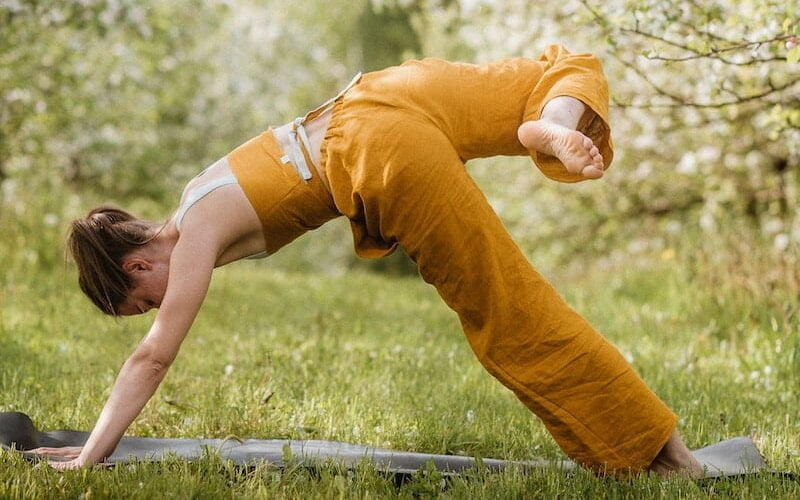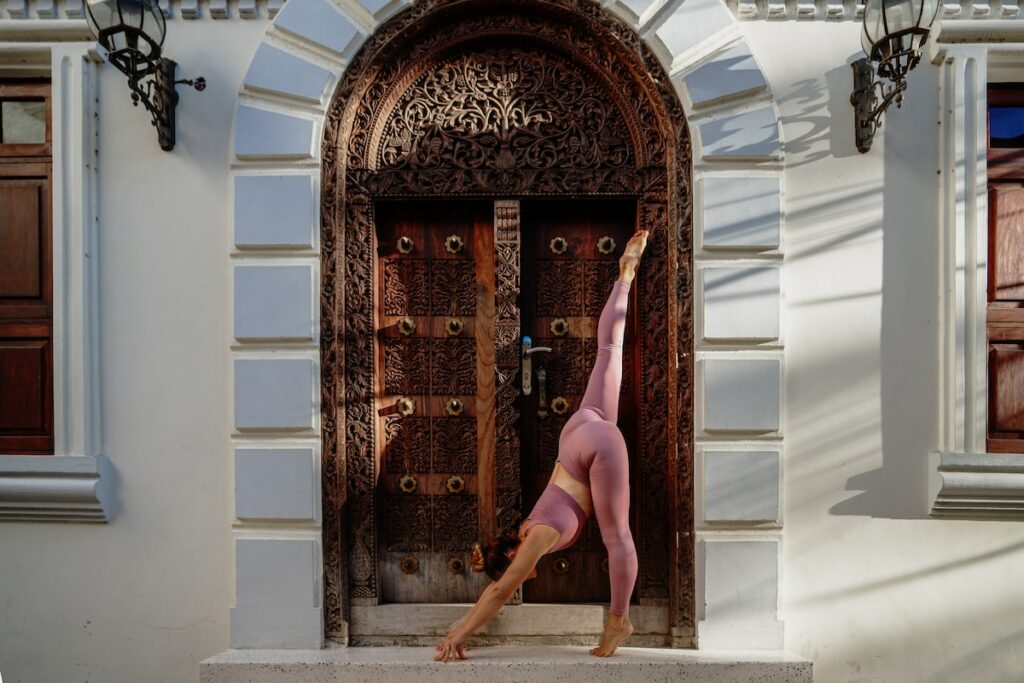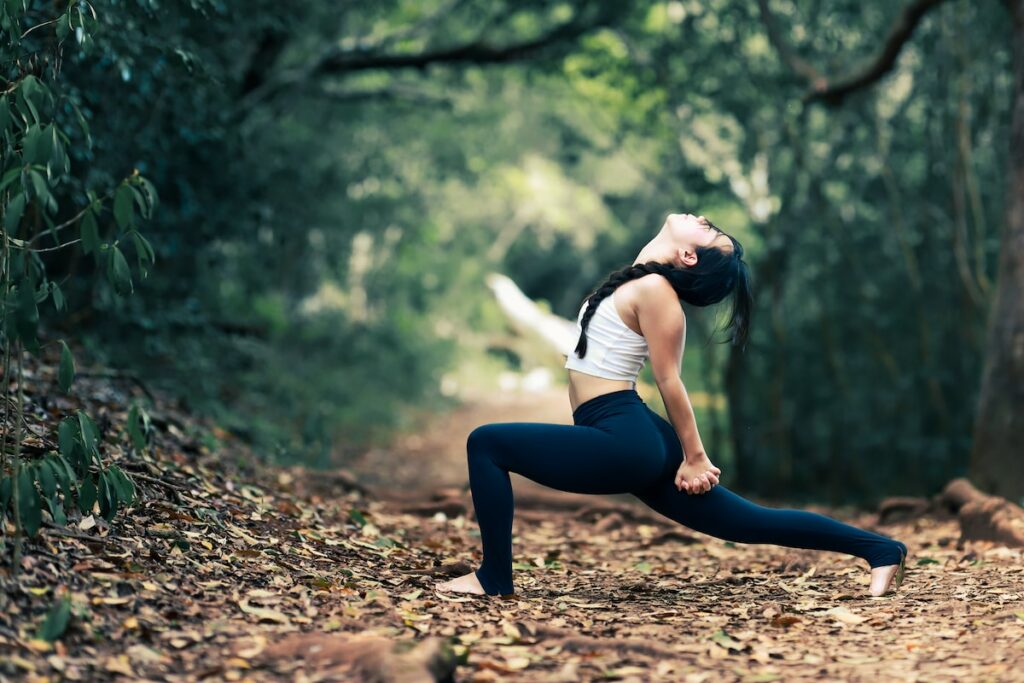4 Ways Stretching Can Enhance Confidence and Wellbeing

Stretching is often overlooked in our daily routine, but it holds tremendous benefits for our overall health and wellbeing. From enhancing balance and flexibility to reducing pain and discomfort, incorporating simple stretches into our lives can have a profound impact on our physical and mental wellness. In this article, we delve into the statistics and explore the remarkable effects of stretching on confidence and overall wellbeing.
If touching your toes may seem like a distant dream, keep reading. There are a few tips to help you stretch. Adding targeted stretches that focus on the hamstrings, lower back, and hips, you can gradually increase your range of motion and enhance both your confidence and wellbeing.
Is stretching improving your balance?
Maintaining good balance is essential for carrying out everyday tasks and reducing the risk of falls, especially among the elderly population. Regular stretching exercises that target the muscles and joints involved in balance, such as the calves, ankles, and hips, can significantly improve stability and prevent falls. According to a study published in the Journal of Geriatric Physical Therapy, a regular stretching routine can reduce the incidence of falls in older adults by up to 45%.

Can stretching increase your flexibility?
Flexibility plays a vital role in our range of motion, posture, and overall physical performance. Stretching exercises, such as yoga and Pilates, help to lengthen and strengthen muscles, tendons, and ligaments, allowing for improved flexibility and joint mobility. Research conducted at the University of North Texas found that individuals who participated in a six-week stretching program experienced a 12% increase in flexibility, leading to enhanced athletic performance and reduced risk of injuries.
Can stretching ease your pain?
Chronic pain can be debilitating, impacting our quality of life and overall wellbeing. Stretching exercises have been proven to provide relief and alleviate pain associated with various conditions, including lower back pain, arthritis, and muscle stiffness. A study published in the Journal of Physical Therapy Science demonstrated that regular stretching can significantly reduce pain intensity and improve functional ability in individuals with chronic lower back pain, leading to an improved sense of wellbeing.
The benefits of stretching extend beyond the physical realm and have a profound impact on our mental and emotional wellbeing. Here’s how stretching enhances confidence and overall sense of wellbeing:
What is the impact of stretching on your body awareness?
Stretching exercises promote mindfulness and body awareness, allowing individuals to connect with their bodies on a deeper level. This increased awareness boosts self-confidence, as individuals become more attuned to their physical capabilities and limitations. As confidence grows, individuals are more likely to engage in physical activities, leading to a positive cycle of improved fitness and increased self-esteem.
Stretching – a stress reduction tool
Stretching has a calming effect on the mind and body, reducing stress levels and promoting relaxation. When we stretch, our body releases endorphins, which are natural mood-boosting chemicals. Regular stretching helps to alleviate anxiety and tension, improving overall mental wellbeing and fostering a greater sense of confidence and inner peace.
Is stretching helping your posture and presence?
Maintaining good posture not only contributes to physical health but also influences our mental state. Stretching exercises that target the muscles responsible for posture, such as the neck, shoulders, and lower back, can help correct postural imbalances and enhance our presence and self-assurance. By standing taller and with better alignment, we project confidence and feel more empowered in various social and professional situations.
Incorporating simple stretches into our daily routine offers remarkable benefits for our physical and mental wellbeing. Whether it’s improving balance, increasing flexibility, or easing pain, stretching has a transformative effect on our overall health. By investing a few minutes each day in stretching exercises, we can experience enhanced confidence, reduced stress, and a greater sense of wellbeing. Embrace the power of stretching and unlock your full potential for a happier, healthier life.

Does it hurt to turn your head to see cars in the lane behind you? Do your knees and back feel stiff and achy? Is it difficult to reach the cereal on the top shelf or bend down to pick up something off the floor? If you answered yes to any of these questions, you’re not alone. Many individuals experience these common physical limitations, which can impact daily life and overall wellbeing. But fear not, because there is an easy way to address these issues and improve your flexibility, ease pain, enhance balance, and prevent falls that can threaten your independence.
According to latest report from Harvard Medical School on stretching (35 Stretches to Improve Flexibility and Reduce Pain), incorporating a regular stretching routine into your life can bring about remarkable transformations. Let’s take a closer look at some of the insights from this report:
How stretching can help a tight ankle or calf muscle
The report highlights how tight ankle or calf muscles can significantly increase the risk of falls. Limited ankle flexibility can affect balance and stability, making simple tasks like walking on uneven surfaces or going down stairs more challenging. By including specific stretches that target the ankle and calf muscles, you can improve flexibility and reduce the likelihood of falls.
Is stretching the secret to making arthritic joints more flexible?
Arthritis can cause joint stiffness, making movements painful and difficult. However, the report emphasizes that regular stretching can help combat this issue. By focusing on gentle stretches that target the affected joints, you can improve range of motion, reduce pain, and increase flexibility, allowing you to perform daily activities with greater ease.
4 ways to make stretching easier
Sometimes, getting started with a stretching routine can feel overwhelming. The report offers four practical tips to make stretching more accessible and enjoyable. These include:
Starting slowly and gradually increasing intensity
Using proper form and technique to maximize effectiveness, incorporating stretches into your daily routine, and seeking professional guidance if needed.
The trick to being flexible enough to touch your toes
Touching your toes may seem like a challenging feat if you struggle with flexibility, particularly in your hamstrings and lower back. However, with the right approach and consistent effort, you can gradually increase your flexibility and achieve this goal. Here’s the trick to becoming flexible enough to touch your toes:
- Consistent Stretching Routine: To improve your flexibility, it’s crucial to establish a consistent stretching routine. Dedicate a few minutes each day to perform stretching exercises that target the muscles involved in toe touching, primarily the hamstrings and lower back. Consistency is key to gradually lengthening and loosening these muscles over time.
- Dynamic Warm-up: Before attempting static stretches, it’s essential to warm up your muscles to prepare them for increased flexibility. Incorporate a dynamic warm-up routine that includes movements such as leg swings, hip circles, and gentle twists. This helps increase blood flow, body temperature, and range of motion, priming your body for deeper stretching.
- Standing Forward Bend: The standing forward bend is an excellent stretch to increase flexibility in your hamstrings and lower back. Here’s how to perform it:
a. Stand with your feet hip-width apart, toes pointing forward.
b. Inhale deeply and as you exhale, hinge forward at your hips, keeping your back straight.
c. Bend your knees slightly if needed to avoid strain. Allow your upper body to relax and hang forward.
d. Reach your hands towards your toes or grasp your calves or ankles, depending on your flexibility.
e. Hold the stretch for 20-30 seconds, breathing deeply and relaxing into the stretch.
f. With each exhale, try to relax further and go deeper into the stretch without forcing or bouncing.
- Modifications and Props: If reaching your toes feels challenging, you can modify the standing forward bend by using props such as yoga blocks or a chair. Place the blocks or the chair in front of you at an appropriate height, and rest your hands on them as you bend forward. This modification allows you to maintain proper alignment and gradually work towards touching your toes over time.
- Gradual Progression: Remember, flexibility takes time to develop, so be patient with yourself. Avoid pushing your body too far beyond its limits, as this can lead to injury. Instead, focus on incremental progress. As your flexibility improves, you can gradually lower the blocks or the chair until you can comfortably touch your toes without assistance.
- Incorporate Other Stretches: In addition to the standing forward bend, incorporating other stretches that target the hamstrings, lower back, and calf muscles can further enhance your flexibility. Stretches like seated forward bends, lunges, and downward-facing dog in yoga are beneficial for improving overall flexibility and aiding in toe touching.
Consistency, patience, and gentle persistence are the keys to becoming flexible enough to touch your toes. By following these tips, gradually increasing your range of motion, and maintaining a regular stretching routine, you’ll be surprised at the progress you can make over time. Celebrate each milestone along the way, and enjoy the journey of unlocking your body’s potential for increased flexibility.
The best stretches to do to increase your range of motion
Choose stretches that target various muscle groups and joints, aiming to increase flexibility and reduce pain. These stretches cover the entire body, from head to toe, allowing you to create a customized stretching routine based on your specific needs and limitations.
The best stretches to do to increase your range of motion:
- Hamstring Stretch: To increase flexibility in the hamstrings, which are located on the back of your thighs, begin by sitting on the floor with one leg extended in front of you and the other bent with the foot resting against the inner thigh. Lean forward from your hips while keeping your back straight, reaching towards your toes. Hold the stretch for 20-30 seconds on each side, feeling a gentle pull in the back of your legs.
- Quadriceps Stretch: The quadriceps, located on the front of your thighs, play a crucial role in walking and running. To stretch them, stand upright and hold onto a stable object for support if needed. Bend one knee and bring your foot towards your buttocks, grasping your ankle or foot with your hand. Gently pull your heel closer to your buttocks while keeping your knees together. Hold the stretch for 20-30 seconds on each side, feeling the stretch in the front of your thigh.
- Calf Stretch: To increase flexibility in the calves, which can help with ankle mobility, stand facing a wall and place both hands against it. Step one foot back, keeping it straight and heel on the ground. Bend your front knee while keeping the back leg extended, and lean towards the wall to feel a stretch in the calf of the back leg. Hold the stretch for 20-30 seconds on each side.
- Chest Stretch: Sitting or standing, interlace your fingers behind your back and gently straighten your arms while lifting your chest. Feel the stretch across your chest and shoulders. Hold this stretch for 20-30 seconds, focusing on deep breathing and allowing the chest to open.
- Hip Flexor Stretch: The hip flexors, located at the front of the hip, can become tight from prolonged sitting or activities involving hip flexion. Kneel on one knee, with the other foot positioned in front of you, creating a 90-degree angle at the knee. Keeping your back straight, gently push your hips forward until you feel a stretch in the front of your hip. Hold for 20-30 seconds on each side.
- Spinal Twist: Lie on your back with your knees bent and feet flat on the floor. Extend your arms out to the sides in a T-shape. Keeping your shoulders grounded, gently drop both knees to one side while turning your head in the opposite direction. Feel the stretch along your spine and lower back. Hold for 20-30 seconds and repeat on the other side.
Remember, it’s important to warm up before stretching and never force a stretch beyond your comfort level. Gradually increase the intensity of each stretch over time as your flexibility improves. Consistency is key, so aim to incorporate these stretches into your daily routine to experience the full benefits of increased range of motion and improved flexibility.
By dedicating a few minutes each day to these stretches, you’ll not only enhance your physical performance but also promote a sense of relaxation and overall wellbeing. Enjoy the journey of discovering your body’s newfound freedom of movement and embrace the positive impact it can have on your daily life.
2 muscles that can give you a pain in the back, and how you can get relief
Back pain is a prevalent issue that affects many individuals. The report highlights two specific muscles that commonly contribute to back pain: the quadratus lumborum and the piriformis. By engaging in targeted stretches that focus on these muscles, you can alleviate discomfort and find relief.
Two Muscles That Can Cause Back Pain and How to Find Relief:
- Quadratus Lumborum: The quadratus lumborum is a deep muscle located in the lower back. When this muscle becomes tight or strained, it can lead to lower back pain. Here’s how you can find relief:
a. Quadratus Lumborum Stretch: Start by standing with your feet shoulder-width apart. Place your right hand on your right hip, and raise your left arm overhead, reaching towards the right side. Lean your upper body to the right while keeping your hips squared. You should feel a stretch on the left side of your lower back. Hold for 20-30 seconds and repeat on the other side.
b. Self-Myofascial Release: Using a foam roller or a tennis ball, lie on your side with the foam roller positioned underneath the area where you feel discomfort. Apply gentle pressure and slowly roll along the muscle, targeting any tender spots. This self-myofascial release technique can help release tension in the quadratus lumborum and alleviate pain.
- Piriformis: The piriformis muscle is located deep within the buttocks. When it becomes tight or inflamed, it can lead to sciatica-like symptoms, including pain that radiates down the back of the leg. Here are some methods to find relief:
a. Piriformis Stretch: Start by sitting on a chair or bench. Cross your right ankle over your left knee, allowing the right knee to drop out to the side. Gently lean forward, keeping your back straight, until you feel a stretch in the buttocks. Hold for 20-30 seconds and repeat on the other side.
b. Gluteal Self-Massage: Sitting on a tennis ball or a foam roller, apply gentle pressure to the gluteal area, focusing on the region where you feel discomfort. Move your body to target different areas and find tight spots. This self-massage technique can help release tension in the piriformis muscle and provide relief from pain.
c. Physical Therapy or Massage Therapy: If your back pain persists or worsens, it’s advisable to seek professional help. A physical therapist or a massage therapist can provide targeted treatments, such as manual therapy techniques, stretching exercises, and strengthening exercises, to address the underlying cause of the pain and help you find long-term relief.
Remember, if you experience severe or chronic back pain, it’s essential to consult with a healthcare professional for a proper diagnosis and personalized treatment plan. They can assess your condition, identify the root cause of your pain, and provide appropriate recommendations.
Incorporating these stretches and self-care techniques into your routine can help alleviate back pain caused by the quadratus lumborum and piriformis muscles. By taking care of your back and addressing muscle imbalances, you can experience relief, improve mobility, and enhance your overall quality of life.


If you’re seeking an easy and accessible way to improve your flexibility, ease pain, enhance balance, and prevent falls, stretching is the answer. The report from Harvard Medical School emphasizes the power of incorporating stretching exercises into your daily routine. By targeting specific muscles and joints, you can increase range of motion, reduce pain, and enhance your overall physical wellbeing. Don’t let limited mobility hold you back—embrace the benefits of stretching and unlock a world of possibilities for a happier, healthier you.




